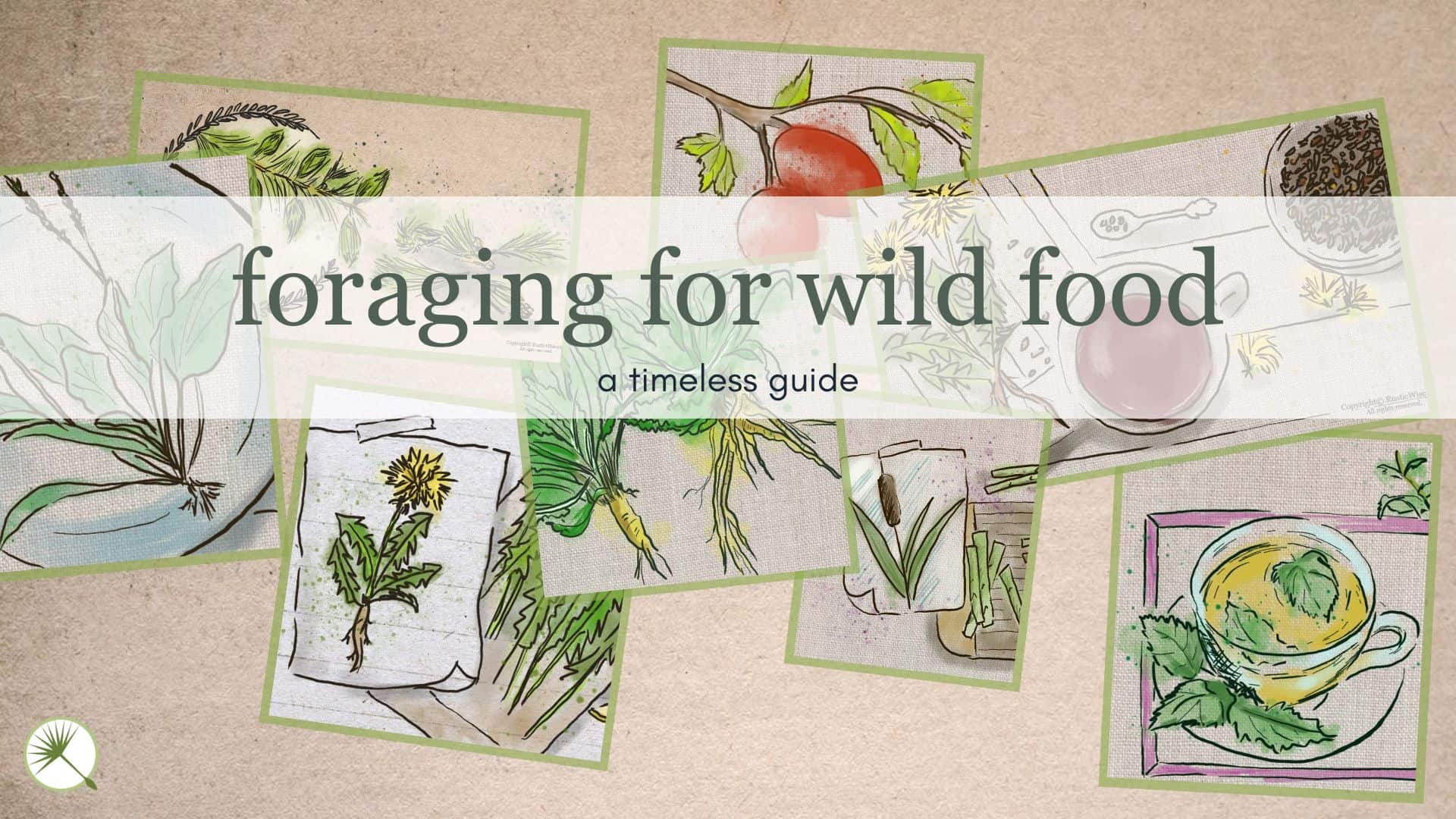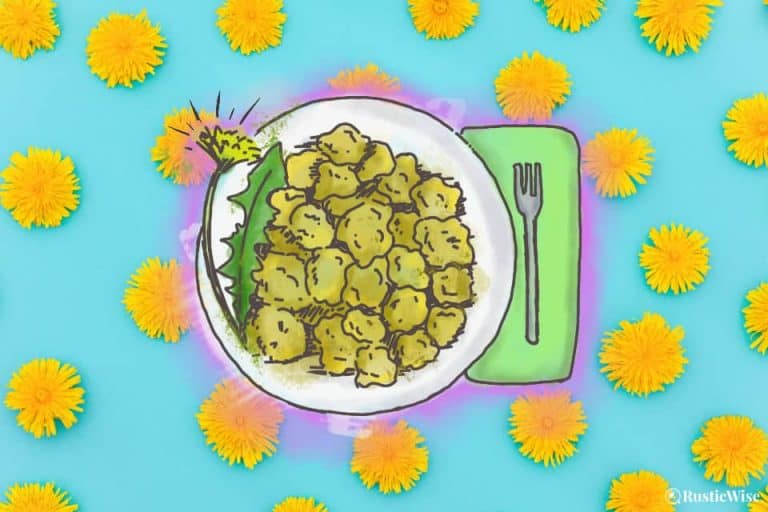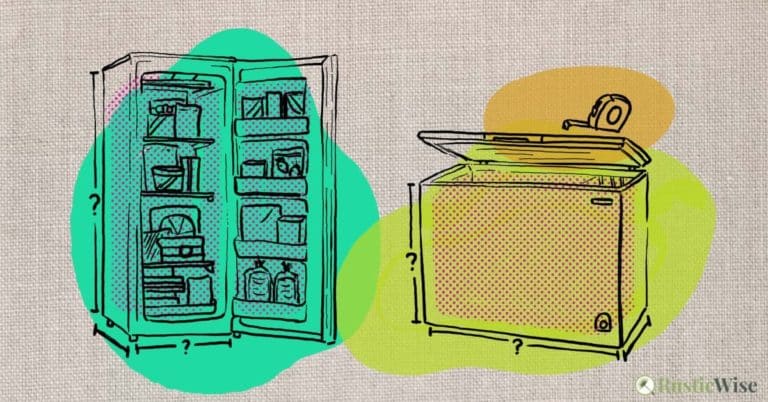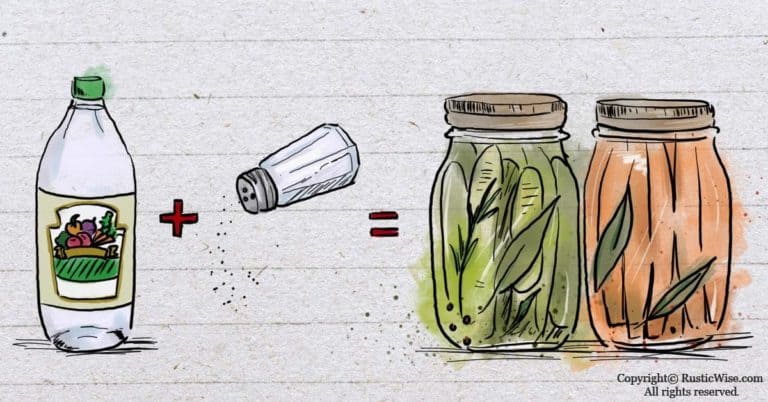A Timeless Guide To Foraging for Wild Food
It’s a comforting thought to know that with a bit of know-how, wild edible food is all around us. While most of us rely heavily on getting our food from grocery stores, foraging for wild food is beneficial on many levels. You get a chance to become better acquainted with your local land, you get fresh and seasonal food with no pesticides, and best of all—it’s free!
Harvesting and Preparing Rosehips
Knowing when to harvest rosehips is the key to getting them at their peak condition—full of vitamins and not too tart.
Chances are, your grandparents may have been foragers without realizing it. My grandparents were Italian immigrants who came to Alberta and farmed the land. They ate fresh dandelion salad daily, and picked common puffball mushrooms when in season.
I remember my family picking Saskatoon berries, blueberries, and other wild berries. We ate’em fresh and baked pies with them. While there are many U-pick farms around, my family loved to go off the beaten track and into the woods.
Foraging tips
Whether you’re new to foraging, or a seasoned pro, here’s a few tips to keep in mind when foraging for wild food.
How to Identify Two Types of Plantain
A closer look at broadleaf vs. narrowleaf plantain.
Always check with a local specialist if you need help with plant identification.
- Be familiar with the area: When foraging, it helps a lot to have a sense of the land. If you’re unfamiliar with the area, maybe tag along with a friend who’s familiar with it. In particular:
- Stay away from roadsides. It’s a good idea to stay several meters away to avoid pollutants.
- Stay away from farmer’s fields, public parks, or any areas that may have herbicides and pesticides sprayed.
- Take sparingly: Always leave enough for other foragers and local wildlife. If you’re foraging nettle for example, don’t take everything from one patch. Take a little from different areas.
- Take time to properly identify plants: Before you go foraging, read up on a few local guide books. Be familiar with poisonous lookalikes.
- Pick plants that appear healthy: Avoid plants with discoloration, or with a wilted appearance—a common sign that the area has been treated with chemicals.
- Know when to harvest: Each plant has a peak time in which to harvest. Knowing when to do so improves your chances of getting a tasty bounty.
- Make sure the plants aren’t at-risk or in a protected area: While some wild edible food grows in abundance, others are less common. Some edible plants such as cattails, for example, may be in a protected marshland. Foraging in protected areas is obviously a no-no.
- Wear appropriate clothing and shoes: Come prepared for the elements when foraging. Wear a hat to protect yourself from the sun. Wearing long-sleeves and gloves protect you from thorns. And of course, the right footwear is key.
3 Different Ways To Make Dandelion Root Coffee
Here’s how to make dandelion root coffee, a tasty, caffeine-free, coffee substitute—three different ways.
The Surprising Health and Medicinal Benefits of Yellow Dock
Yellow dock is an edible wild plant high in iron, and vitamins A and C with medicinal properties.
Basic foraging supplies and tools
You really don’t need anything fancy to forage. Here’s an essential list to get started.
Basic foraging supplies:
- A sharp pair of scissors or a pocket knife
- Trowel (for digging up roots)
- Identification book (local to your area)
- Basket, reusable produce bags, or something similar
- Notebook and pen (to keep track of your observations)
- Pair of gloves
- Wide-brimmed hat
- Appropriate footwear, long-sleeves to protect against thorns
- Bug spray
- First aid kit
- Map or compass
- A comfy backpack to hold everything, along with a water bottle and snack
If you’re looking for a good book about wild plants to inspire you along the way, we’ve really liked the book, The Wild Wisdom of Weeds: 13 Essential Plants for Human Survival by Katrina Blair. It’s packed with helpful tips plus recipes on how to prepare your wild finds.
An Edible Wild Food with Healing Properties: Using Broadleaf Plantain
There are many practical broadleaf plantain uses. Learn more about how you can use this plant to boost health.
So-called backyard weeds to forage
Sometimes the best place to begin your foraging journey is right in your own backyard.
When we bought a fixer-upper a few years ago, we were greeted with a yard overrun with weeds. Not exactly a good first impression. At first, we battled the weeds by trying to pluck them out one by one. We knew in our hearts that we were on the losing end of a long battle.
We also tried a variety of eco-friendly or homemade weed killer solutions with varying levels of success.
Slowly by slowly, we resigned ourselves to our fate. We didn’t want to get our yard chemically treated. (Clearly the previous homeowners didn’t either.) We have kids that play in the yard, plus a tortoise that also eats the weeds.
One day, we decided to be more like our tortoise and try eating some of the weeds ourselves. We made dandelion fritters, dug up the roots, dried them and made dandelion root tea/coffee. It was delicious! We also tried blanching and stir frying the dandelion greens. Not bad.
For us, our backyard was an easy entry (or re-entry) into foraging for wild food. We knew that it was free of pesticides and herbicides.
Cooking with Dandelions: Improving the Taste of Dandelion Greens
Cooking with dandelions is an easy and nutritious way to make use of an edible plant you may have growing in your backyard.
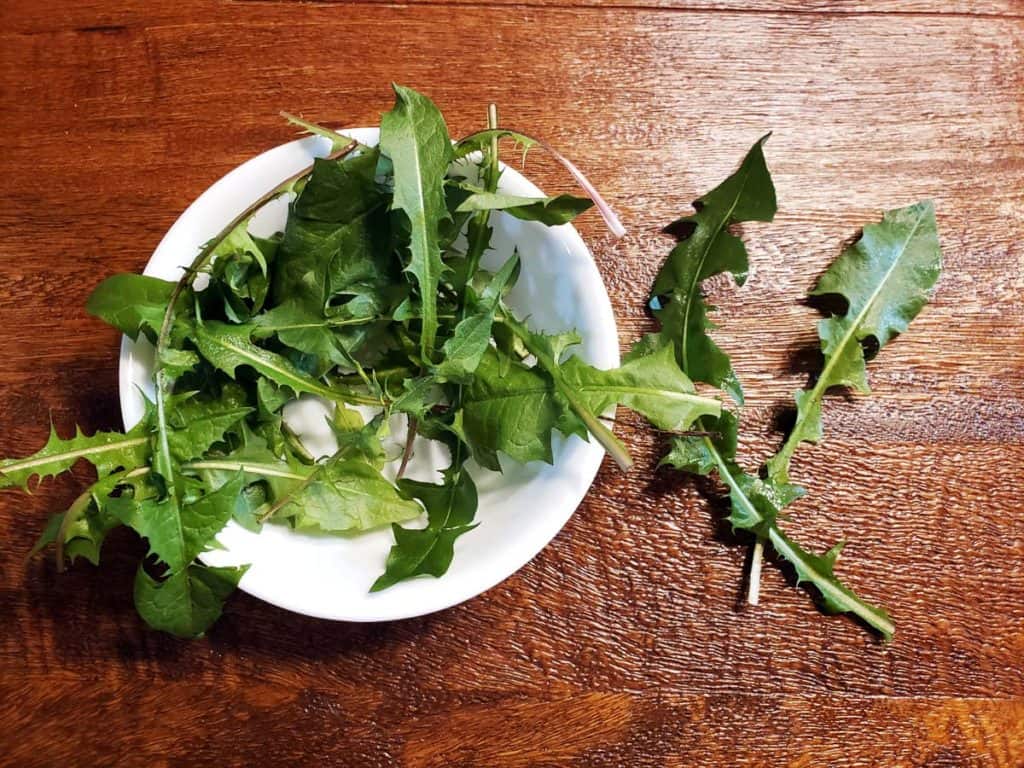
Credit: RusticWise.com
Here are some edible weeds you might find in your own backyard:
- Dandelions: With their bright yellow flowers and jagged-edged leaves, dandelions are one of the easiest wild plants to identify. From flower to root, the entire plant is edible. The greens are a rich source of vitamins A and K, and can be eaten raw, or cooked.
- Plantain: Not to be confused with the plantain fruit that’s similar to a banana, plantain is found in areas of “human disturbance” such as sidewalk cracks, as well as grasslands, along rivers and farmland. There are two main types of plantain: broadleaf and narrowleaf. Plantain is a rich source of vitamins A, C, and E. Its leaves, roots, and seeds are edible. Chop up the slightly bitter leaves for salads, or blend for a healthy green juice. Plantain leaves also have medicinal properties and are used to treat minor wounds, soothe insect bites, and provide relief for sunburn or poison ivy.
- Purslane: Purslane is a surprisingly tasty plant. We like it so much that we sometimes grow it in our garden. It has a mild, slightly sweet and tangy taste, and its leaves are plump and filled with “juice.” It’s a source of omega-3 fatty acids plus many vitamins such as A and C, and other nutrients. There are many ways you can eat purslane: raw, blending into juices, cooking, freezing, and even fermenting. Purslane is often confused with portulaca, also known as moss rose. While common purslane is edible, portulaca (aka ornamental purslane) is not.
- Lambsquarters: You might see lambsquarters in your backyard, growing along the fence. Its leaves are essentially wild spinach. According to the U.S. Department of Agriculture, one 100 gram serving of raw lambsquarters leaves provides almost all of your daily vitamins A and C requirements.
How To Identify and Forage Lambsquarters
Learn the ‘ins and outs’ of lambsquarters identification, an edible wild plant similar to spinach.
Purslane: Why You Should Be Eating This Plant
Eating purslane–health benefits and how to incorporate this tasty, tangy succulent plant into your diet.
Foraging for wild food in fields, meadows, and wetlands
If you look closely in fields, meadows, and along the edges of woods, you’ll find some tasty edible plants.
- Yellow dock: This wild plant gets its namesake from the yellowish-colored roots. The leaves and stems can be eaten in moderation. Sprinkle the dried seeds on top of salads or cereals for a dose of fiber. The roots are made into yellow dock tea that helps with digestive issues.
- Amaranth: The seeds of this plant are dried and produces an ancient grain that’s rich in protein and fiber. Just one cup (248 grams) of cooked amaranth contains a whopping 9.3 grams of protein. Many people cook amaranth as part of nutritious breakfast. Amaranth’s leaves and roots are also edible.
- Stinging nettle: True to its name, stinging nettle causes a temporary stinging or burning sensation on skin when accidentally brushed against. While prickly in raw form, stinging nettle’s leaves are edible once cooked, dried, or frozen. Stinging nettle tea is made of its leaves and flowers. It has a wide range of medicinal uses including reducing inflammation, lowering blood sugar and blood pressure, treating benign prostatic hyperplasia (BPH), and as a tonic for relieving minor hay fever.
- Cattails: Cattails are easy to spot in nature. Just look for the tall stalks with fluffy brown “catkins” on top. Since cattails sprout up in and around bodies of water, it’s vital to only harvest from safe and chemical-free water sources. The USDA says that the entire cattail plant is edible when gathered at the proper stage of growth. Cattail pollen adds a splash of yellow to your cooked dishes. The young shoots are great cooked or raw. The flower stalks are eaten like corn-on-the cob once you remove the outer layer and steam/boil it. The rhizomes are cooked like potatoes. Oh, and cattails are also great home decorations.
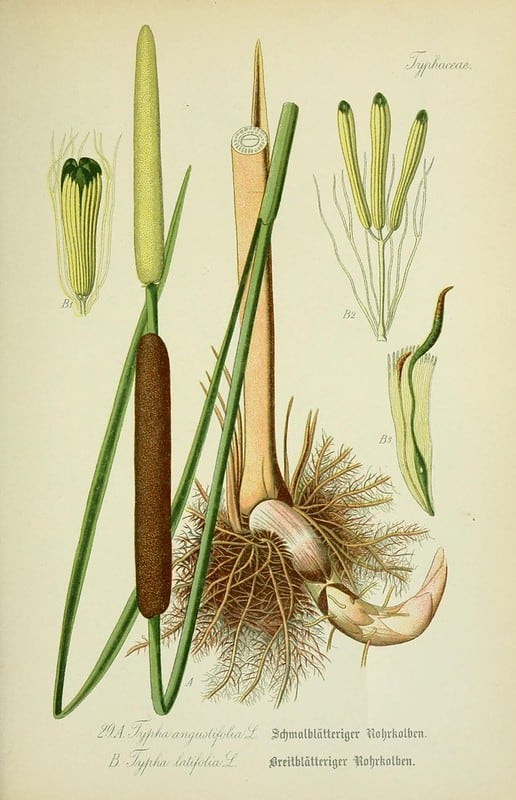
All About Stinging Nettle’s Amazing Health and Medicinal Uses
Stinging nettle is rich in nutrients & used for a wide range of natural medicinal purposes including treating BPH, inflammation, and hay fever.
How To Eat the Cattail Plant + 5 Tasty Cattail Recipes
Cattails are edible wild food. Here are some foraging tips, plus how to eat the cattail plant, along with 5 recipes to get you started.
Foraging for wild food in the woods
Into the woods we go! Here’s a few wild edible foods you’ll find the next time you go for a hike in the woods. Or you might spot some of these plants closer to home.

Credit: RusticWise.com
- Rosehips: Rosehips are the seedpods, or fruit of rose bushes. There are many varieties of rose bushes, some you may have growing in your backyard, others found growing wild. Rich in vitamin C, you’ll find that the best time to pick them is when they have a vibrant red color, and the skin is smooth. Depending on where you live, this is typically in fall after the first touch of frost. There are so many ways to use rosehips. One of the most common ways is to dry them to make rosehip tea.
- Spruce tips: These bright green tips found on spruce trees in the springtime are surprisingly edible. They are soft and have a citrus flavor. They are easy to harvest and come off easily from spruce branches. Read more about foraging for spruce tips.
- Pine needles: Besides the pine nuts, many other parts of the pine tree are also edible including the needles, bark, pollen, and pine cones. The needles have a strong, woodsy flavor and make a nice pine needle tea, or garnish.
A Guide To Foraging Pine Needles and How to Make Pine Needle Tea
Pine needles have so many great culinary uses. Foraging pine needles is fairly easy once you know a few tips. Here’s how to forage pine needles and what to do with them.
A Guide To Foraging Pine Needles and How to Make Pine Needle Tea
Pine needles have so many great culinary uses. Foraging pine needles is fairly easy once you know a few tips. Here’s how to forage pine needles and what to do with them.
Would you like more timeless tips via email?
Fun tips to help you live an independent, self-sustaining lifestyle. Opt-out at any time.

References:
- Blair, Katrina (2014). The Wild Wisdom of Weeds: 13 Essential Plants for Human Survival. Chelsea Green Publishing. ISBN 978-1-60358-516-3.
- USDA, Food Data Central, Lambsquarters, raw, https://fdc.nal.usda.gov/fdc-app.html#/food-details/169244/nutrients. Accessed February 2021.
- SELF Nutrition Data, Amaranth grain, cooked, https://nutritiondata.self.com/facts/cereal-grains-and-pasta/10640/2. Accessed February 2021.
- USDA Plant Guide, Broad-Leaved Cattail, https://plants.usda.gov/plantguide/pdf/cs_tyla.pdf. Accessed February 2021.

Author: Josh Tesolin
Josh is co-founder of RusticWise. When he’s not tinkering in the garden, or fixing something around the house, you can find him working on a vast array of random side projects.

